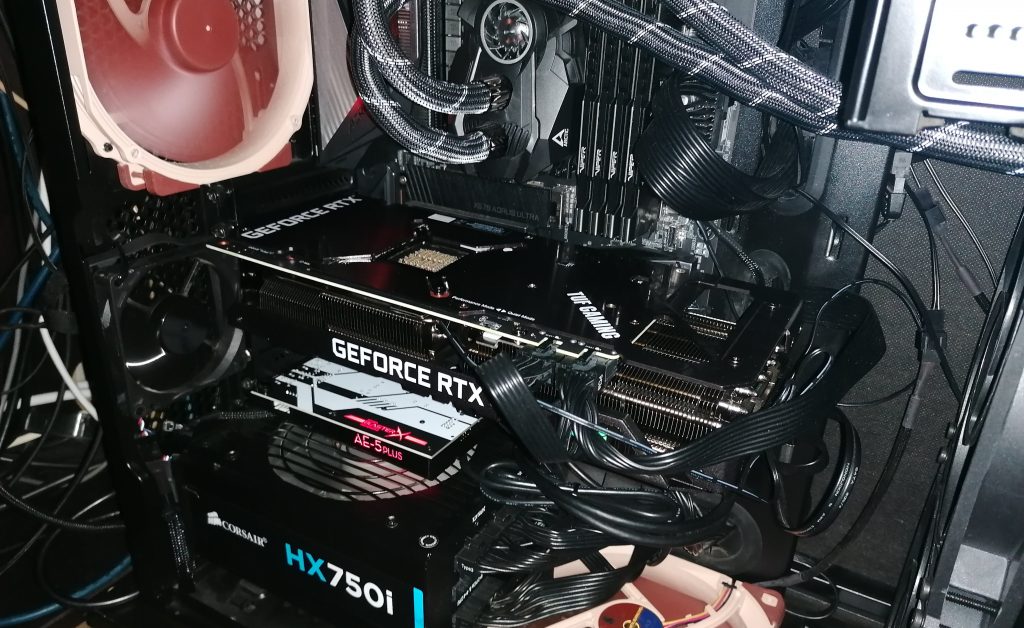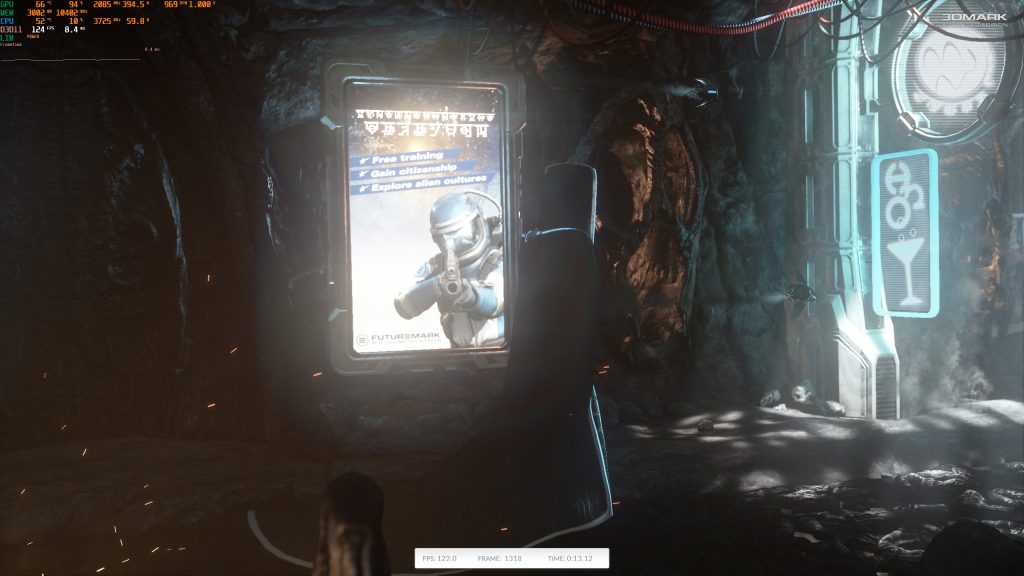Our community member Gurdi was able to get hold of several GeForce RTX 3090s (F5 skills!) just in time for the launch and was also kind enough to invest some time to provide you with new knowledge about this map. Among other things, he devoted himself to the question of whether and how this new card could be overclocked. Many have asked themselves this question and it is fortunate that Gurdi can now answer it for you. I will now simply leave the word or the next lines of this article to Gurdi…
GeForce RTX 3080 and RTX 3090 Undervolting – When Reason and Experimentation Meet NVIDIA Ampere
The new amp cards are finally on sale and the GeForce RTX 3090 recently made its debut in the series. Here once again the test system at a glance:
| Housing: | Insulated Fractal Define R5 PCGH Edition |
| Power supply unit: | Corsair HX 750I |
| CPU: | Ryzen 3900X optimized |
| Board: | AORUS X570 Ultra |
| RAM: | 32 GB DDR4 Patriot Viper (SK Hynix) @ 3800MHz CL 18/19/21/34 1 Optimized subtimings, Infinity Fabric 1:1 |
| Video card: | ASUS TUF Gaming RTX 3080/3090, Gigabyte RTX 3090 Gaming OC |
| Divers: | Sound card, 2x BD burner, 280 radiator for CPU, 5 case fans (4×140 1×80) |
| Tweaks: | Neither Hardmods nor Softmods. |
After the topic Undervolting was worked on now in detail, here also some experiences of me in the other direction. To anticipate, the performance increase that can be achieved under air under tolerable conditions is unfortunately marginal. Even maximum OC will give you about 10% more power in the peak, but this is only bearable if you take the cards under water. Especially the accumulator comes close to core melt during overclocking.
How this looks like, if there is really some VRAM occupied which has to work, you can see very well in these examples. The decisive factor here is how much bandwidth is required. Brigtht Memory runs in 4k…
AOE 3 Remastered in 5k. Note the fan speed, normal would be around 1800. AOE 3 is even underpowered!
A clear indication also still in advance, overclocking makes sure that your warranty expires and happens always on your own risk! This can also affect the life of your components.
Overclocking
Both the Afterburner and EVGA’s Precision X currently work with amps. The newer versions both offer a voltage slider, this increases the maximum voltage in mv, but in most cases this will be of little use, because the power limit is always limited before. Overclocking via offset on the core and the memory is otherwise possible without problems. The power limit can also be increased with both tools.
Precision X currently has a bug that has a measurable impact on your score when the application is open while you are using it. In general, I recommend the afterburner, which offers better monitoring and causes fewer problems. Moreover, it is universally applicable, both for AMD and Nvidia cards. You can also overclock with the afterburner and the integrated curve editor (click on the tool, then Ctrl +F), you can use it to refine your results. But that is because the curve editor is actually quite buggy at the moment.
Important basic rules for this:
- Voltage below 725 mv are not accepted
- You should cut the maximum possible clock rate with the curve, otherwise the card will become unstable with too high clock rates in the peak. A frequency can remain the same within a curve for a maximum of 3 voltage points, after that the curve must continue to rise, otherwise it will automatically correct itself when it is taken over, throwing the setting overboard.
- Don’t forget to overclock the memory, without which you will hardly get any results worth mentioning.
- Don’t get your hopes up too high, the results are generally quite sobering and are hardly in proportion to the extra power used. With a reasonable everyday setting you will probably get about 6% more power. Important for good overclocking is a high quality circuit board, otherwise much of your extra power will disappear into thin air due to the high temperatures at the converters. Good customs are at an advantage here, especially ASUS seems to stand out positively at the moment.
Collected clock rates of any cards on the net should always be treated with caution. In scenes or applications that don’t use the card to its full capacity, you’ll just get some nice numbers like this example.
But under the right load it looks more like this, this is one and the same setting.
Time is not equal to time. If you are permanently on the road with 1.9-2.0 Ghz on the 90s, you can actually be quite satisfied.





































Kommentieren